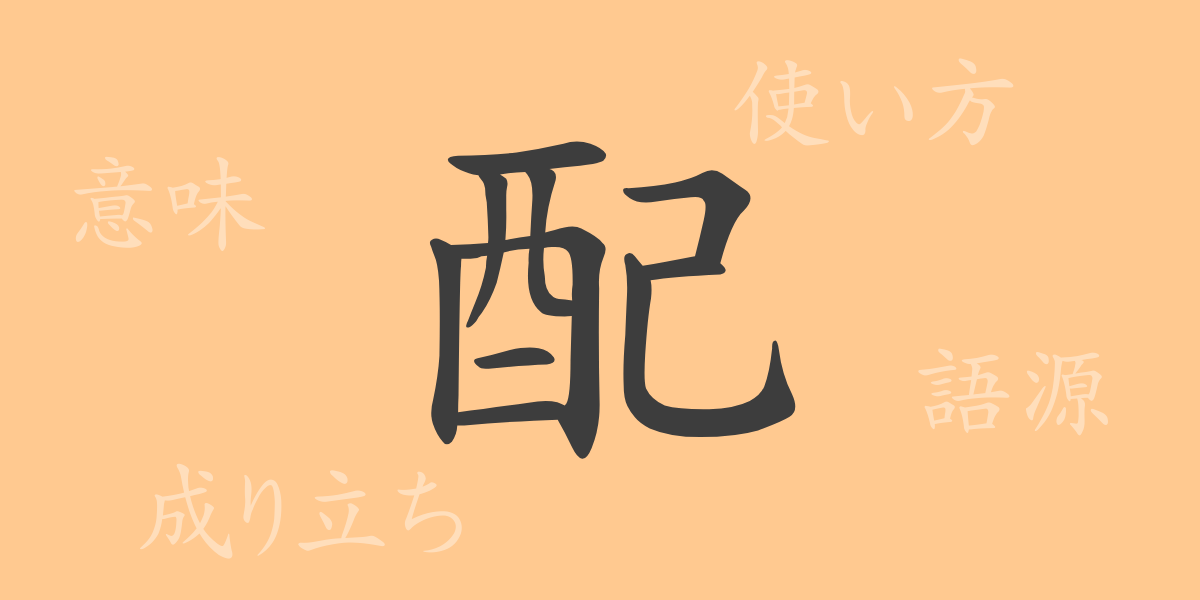In Japanese culture, each kanji character has its own rich history and meanings, profoundly reflecting the depth of the language. This article focuses on the commonly used kanji “配” (はい [hai]), exploring its origins, meanings, usage, and the beautiful expressions it helps create. By the end of this article, you will discover the diverse charms of “配”.
Origins of 配 (はい [hai])
The kanji “配” originated in ancient China and evolved from pictographs. It combines “酉” (とりへん [torihen]), symbolizing a vessel for alcohol, and “己” (き [ki]), meaning self, originally depicting the act of distributing wine. This led to its meanings of dividing and allocating. Over time, “配” also came to symbolize harmony and distribution in broader contexts.
Meanings and Usage of 配
“配” encompasses meanings such as “to allocate,” “to harmonize,” and “to be considerate.” It is used in contexts such as distributing resources, caring for others’ feelings, and maintaining balance. In Japanese, the character appears in various words and idioms, adapting to different contexts to convey multiple nuances.
Readings, Stroke Count, and Radical of 配
The kanji “配” is integral in Japanese, with various readings and a simple structure:
- Readings: On’yomi (Sino-Japanese reading) is “ハイ” (はい [hai]), and Kun’yomi (native Japanese reading) includes “くば.る” ([kubaru]).
- Stroke Count: “配” consists of 10 strokes.
- Radical: The radical of “配” is “酉” (とりへん [torihen]), commonly associated with alcohol-related kanji.
Idioms, Phrases, and Proverbs Using 配
There are many idioms and phrases involving “配”, each enriching the Japanese language:
- 配慮 (はいりょ [hairyo]): Consideration of others’ feelings or positions.
- 配分 (はいぶん [haibun]): The act of distributing or allocating.
- 心配 (しんぱい [shinpai]): Concern or worry, literally translating to giving care.
- 気配 (けはい [kehai]): A sense or indication of something, awareness of surroundings.
- 配下 (はいか [haika]): Subordinates, those who serve under someone.
Conclusion on 配
The kanji “配” symbolizes distribution and consideration, embodying both generosity and empathy in Japanese culture. Its usage across various expressions and contexts illustrates the depth of Japanese communication. Understanding the expansive world of “配” enhances our appreciation of Japanese and improves the quality of our interactions. Let this exploration into “配” inspire further exploration into the richness of the Japanese language.

























